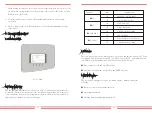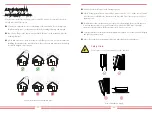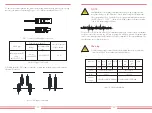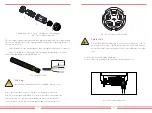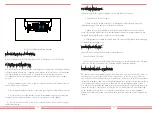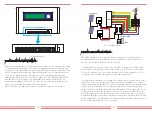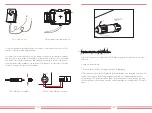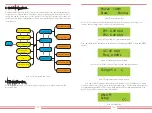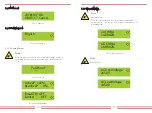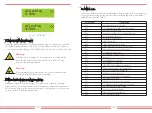
AC OverFreq
<<
51.50Hz
AC LowFreq
<<
47.50Hz
Pic8.20 “CUSTOM”
9. Repair and Maintenance
10.1 Error code
10.Error information and processing
String type inverter doesn't need regular maintenance. However, debris or dust will affect
heat sink's thermal performance. It is better to clean it with a soft brush.If the surface is
too dirty and affect the reading of LCD and LED lamp, you can use wet cloth to clean it up.
In the case of failure the LCD screen will display an alarm message. In this case the inverter
may stop feeding energy into the grid. The alarm description and their corresponding
alarm messages are listed Table 9.1.
Three-phase string inverters are designed according to grid-connected operating
standards. It meets safety requirements and electromagnetic compatibility requirements.
Before leaving the factory, the inverter has undergone several rigorous tests to ensure that
it can be operated reliably and permanently.
Warning:
When the device is running, the local temperature is too high and the
touch can cause burns. Turn off the inverter and wait for it cooling,
then you can clean and maintain.
Warning:
When cleaning any part of the inverter, no solvent, abrasive materials
or corrosive materials shall be used for cleaning.
- 33 -
- 34 -
Description
Error code
DC input polarity reverse fault
F01
DC insulation impedance permanent fault
F02
DC leakage current fault
F03
Ground fault GFDI (battery and grounding)
F04
Read the memory error
F05
Write the memory error
F06
GFDI blown fuse
F07
GFDI grounding touch failure
F08
IGBT damaged by excessive drop voltage
F09
Auxiliary switch power supply failure
F10
Ac main contactor errors
F11
AC auxiliary contactor errors
F12
Reserved
F13
DC firmware over current
F14
AC firmware over current
F15
GFCI(RCD) Ac leakage current fault
F16
Three phase current, over-current fault
F17
AC over current fault of hardware
F18
All hardware failure synthesis
F19
DC over current fault of the hardware
F20
DC leakage flow fault
F21
Crash stop (if there is a stop button)
F22
AC leakage current is transient over current
F23
DC insulation impedance failure
F24
DC reverse irrigation failure
F25
The DC busbar is unbalanced
F26
DC end insulation error
F27

